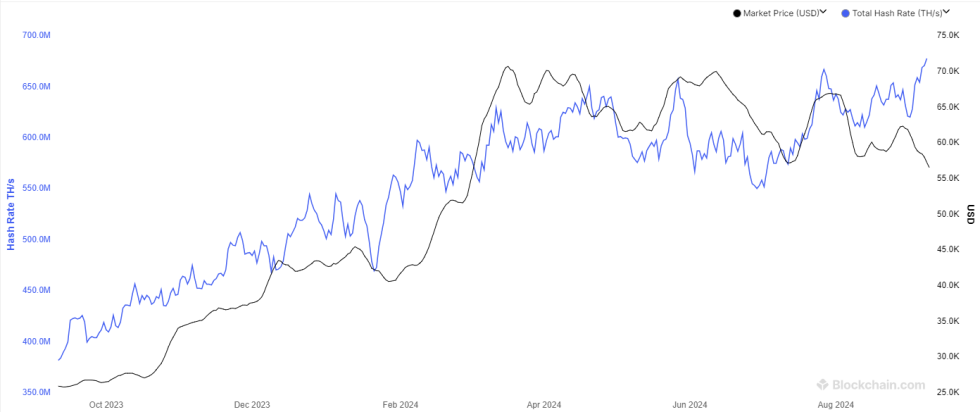On-chain data shows that Bitcoin’s mining hash rate just set a new all-time high (ATH) despite the asset’s bearish trajectory.
Bitcoin mining’s 7-day average hash rate has recently skyrocketed
“Mining hash rate” refers to a metric that tracks the total amount of computing power that miners as a whole have connected to the Bitcoin blockchain. Miners need this computing power because the BTC network uses a proof-of-work (PoW) consensus mechanism, where validators compete to solve mathematical problems. to add the next block to the chain.
As such, hash rate can reflect how miners perceive the cryptocurrency. An increase in the metric could suggest that these validators find the asset attractive at the moment, so new miners are coming in and/or old ones are expanding their facilities.
Similarly, a decline implies that some miners have decided to disconnect from the network, potentially because they no longer believe that mining BTC is profitable.
Now here is a chart that shows the trend of Bitcoin’s 7-day average mining hash rate over the past year:

Looks like the 7-day average value of the metric has been rising over the past day | Source: Blockchain.com
As the chart above shows, the 7-day average hash rate of Bitcoin mining spiked towards the end of July to set what was then a new record high for this indicator. However, after this peak, the indicator experienced a rapid decline and it was not until the second half of August that the indicator made some recovery.
This rally held for a while, but the indicator ended the month with a return to previous lows. As for why these trends played out the way they did, BTC’s corresponding price action may hold the answer.
Bitcoin miners earn most of their income from block grants that they receive when they solve blocks on the network. A feature of the chain is that these rewards remain fixed in BTC value and are also more or less distributed at a fixed time interval.
This means that there is really only one variable associated with them: the USD value of the cryptocurrency. So, whenever the price increases, miners’ revenues also increase. The late July spike in hash rate occurred as BTC approached the $70,000 level, while the drop that followed that spike occurred as the asset itself suffered a sharp decline.
Interestingly, since the beginning of September, Bitcoin’s 7-day average mining hash rate has increased despite the fact that the price has been steadily falling.
This suggests that miners have decided to be bold and have expanded their rigs in anticipation of a future rally. The Hashrate had also shown a similar trend earlier in the year, which led to the rally towards BTC’s ATH price.
It now remains to be seen whether this extension of the Hashrate to a new ATH would also work for Bitcoin miners this time around or not.
BTC Price
At the time of writing, Bitcoin is trading at around $55,100, down nearly 6% over the past seven days.
The price of the coin appears to have been heading down over the last few days | Source: BTCUSD on TradingView
Featured image by Dall-E, Blockchain.com, chart by TradingView.com

